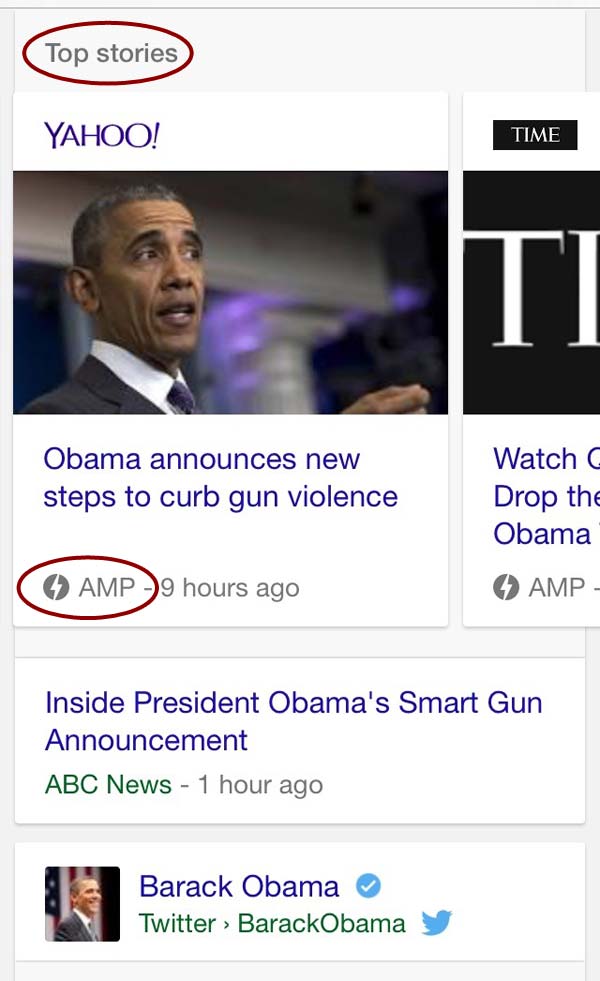Since the end of February, Google has been filling its Top Stories carousel with AMP content for its mobile users. Last week, Google continued this trend in its Google News app. The AMP project has been gaining some traction since its launch last fall, and as it becomes more prominent — especially in Google search results — one huge question lingers: It is worth providing our web pages in this new format too?
Should You Use AMP to Provide Content?
The answer depends on two questions:
- Do you care about search results?
- Do you have, or do you want to have, mobile traffic?
If the answer to both of these is yes, then AMP is worth seriously considering. Yes, it requires providing your content in multiple formats, but there’s one huge incentive for doing so: the incentive of visibility.
Visibility

Distributing ‘AMPified’ content provides a way to increase the visibility of that content within Google. AMP content now gets preferential treatment within search results for mobile users, which is a big deal if you care about the visibility of your content.
AMP is now a requirement to make it into the Top Stories section of mobile searches. Google also uses a lighting bolt icon to clearly designates which content is AMPified. Not only will the content get better treatment from Google, but users seeing this symbol will know that the content will load extremely fast and not be bloated with other 3rd party scripts. And once users begin to associate this symbol with fast loading times, they may begin to prefer these designated links over others, since they know what to expect when they click — a fast, uncluttered view of the content.
The value of this additional visibility that AMPified content can get, can be seen in a recent TNW article. They reported that one of their posts received 40,000 extra views above what they would have received from organic search, because it made its way into the Top Stories section – something that would not have happened had they not provided an AMP version of the post.
Worth a Try
Although I have had reservations about AMP — and still do — especially the use of new tags (i.e. “extended components”) and the reliance on 3rd party JS, it’s easy to see why AMP will continue to grow in usage. If Google gives content in this format preferential treatment for mobile traffic, and mobile users make up a significant part of a site’s traffic, it’s in the best interest of any publisher (or content creator) who’s interested in search results visiblity to provide content in this format.
Now, this may seem redundant, especially for web pages that have already been optimized for mobile users, but it’s in some ways similar to the ubiquitous RSS feeds we generate. We create different formats of the same content in order to make it consumable in a variety of channels.
Is AMP worth a try? For content creators looking to increases their visibility in search results, now seems like a good time to give it a try. There’s an opportunity, especially while the project is still young, to get a head start over competitors. If Google prefers AMP content over other content, and your competitors aren’t providing AMP content, there’s a huge opportunity to get higher visibility simply by providing it in this format. AMP also has built in support for Google Analytics, which means that in time you can see exactly the impact it’s having, and whether it’s worth providing.
Situations vary, and the incentive of visibility on Google may not matter to you at this point. But if it does, and mobile users are part of who you’re targeting, now is as good a time as any to look at how to AMPify your content.